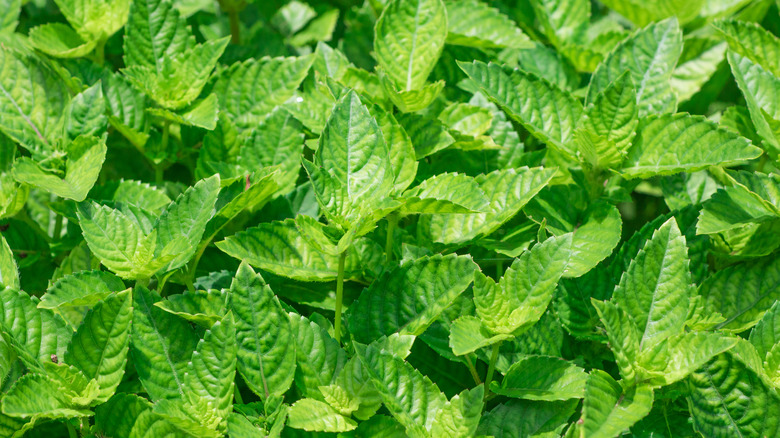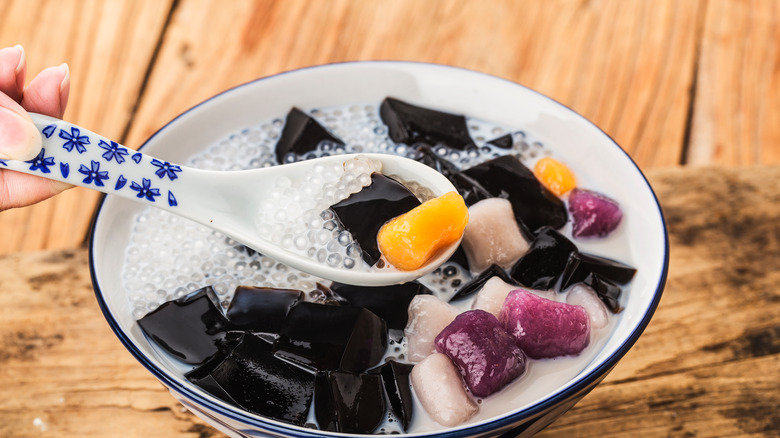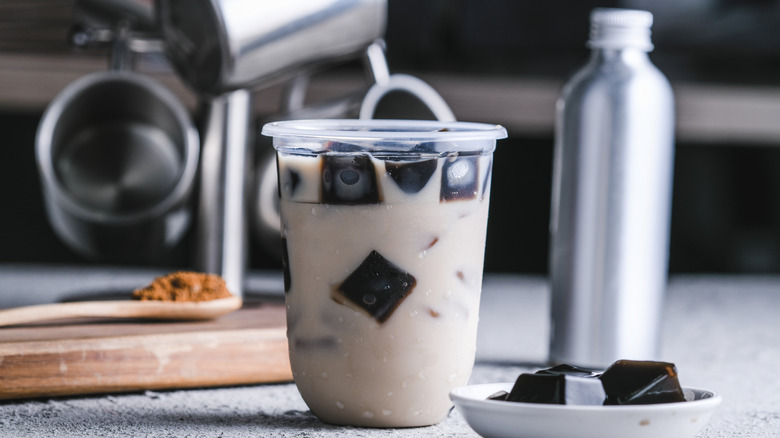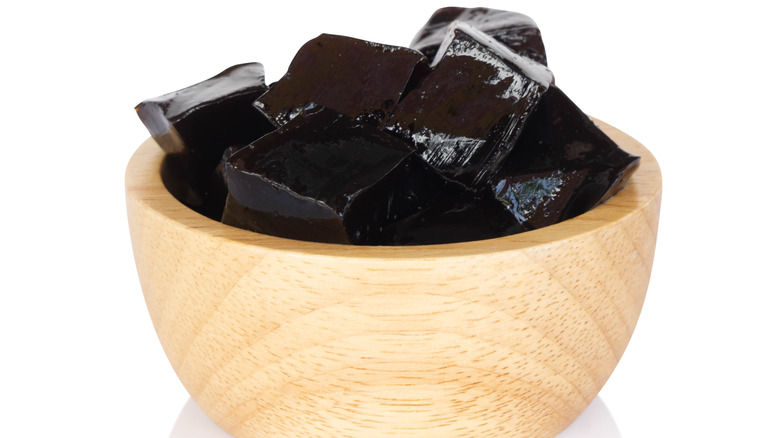What Is Grass Jelly And Is It Nutritious?
Grass jelly hails from Asian countries like China, Taiwan, and Singapore, according to Livestrong, and comes in two varieties — green and black. The Mesona palustris plant produces the key ingredient needed to make black grass jelly, while the Cyclea barbata Miers plant is required to make green grass jelly. Per Atlas Obscura, these plants are part of the mint family and are picked in the spring and left to dry. Once dried, they are boiled until they form a thick substance to which starch is added, resulting in a gelatinous food that is called grass jelly.
The site goes on to share the Hakka, who were part of the Han Chinese majority, would use grass jelly as a cooling and hydrating gel to prevent those who worked long hours in the fields from having a stroke. Today, grass jelly is a popular and sweet dessert that is cut into cubes and has a wiggly, jiggly property to it — similar to everyone's favorite Jell-O. Livestrong shares that it is often served in beverages like bubble milk tea, with fresh fruit, or with sweetened red beans. It sounds tasty, but is it?
What does grass jelly taste like?
"In the olden days, many older folks would eat grass jelly served with ice cubes to cool down from the summer heat," Annie Choung, a customer marketing specialist for Taiwanese dessert chain MeetFresh, explained to Thrillist. Sounds delicious and refreshing. But if you've ever experienced grass jelly in the United States, chances are you had it out of a can that was purchased at a local Asian market and served with some fruit or tea.
However, grass jelly purists may try to persuade you from going anywhere near grass jelly that comes out of a can. In fact, Vice shares that most Westerners describe canned grass jelly as devoid of any real taste. But the writer goes on to reveal that is not the case with fresh grass jelly. Fresh grass jelly is actually quite sweet and aromatic to the nose. Its texture is described as "chewy," "thick," and a little like the consistency of "flan." Web Restaurant Store likens its taste to an herbal mint.
So, what can you do if you want to experience fresh grass jelly?
Can you make grass jelly at home?
If you live in the United States, chances are you will not be able to find fresh Mesona and several sources noted that making grass jelly is quite time-consuming and a real "art." "It's tedious to boil, lay down the grass jelly, [and] scrub it to get the gelatin-like textures out of the grass," Patrick Mock, who manages a Cantonese Bakery in New York's Chinatown where they make fresh grass jelly, told Thrillist. "But the texture becomes more elastic-y—it bounces back a lot more compared to the canned ones."
However, per Web Restaurant Store, if you can find grass jelly powder, you can make this sweet treat yourself. You simply need to boil water, add the appropriate amount of the powder, allow to cool and congeal, and you'll end up with something very similar to Jell-O. The site shares that grass jelly powder can also be used in icings, whipped cream, and other sweet desserts.
Is grass jelly nutritious?
Grass jelly sounds delicious, but is it nutritious and healthy? The Web Restaurant Store blog says this sweet treat is also sweetly good for you. They share that grass jelly contains antioxidants, has antibacterial properties, and can aid in digestion. Health Talks concurs, explaining that grass jelly's rich fiber content can help keep you regular and ease stomach pain. In addition to aiding digestion, Health Talks explains that foods rich in fiber can also help with weight management, touting grass jelly as such a food.
If you are feeling a little under the weather with a fever and a cough, grass jelly may just be what can cool you off due to those cooling properties. It may even have some preventative qualities when it comes to diabetes and cancer. But according Livestrong, while grass jelly might have several potential health benefits, the site is also quick to note that not enough research has been conducted on this delicate Asian fare to positively conclude any of them, and you should always check with a doctor before changing up your diet.



